Battle of the Halkin - Gol (15 photos)
 Bashny.Net
Bashny.Net
One of undeclared wars in which fought the Soviet Union began fighting on Khalkhin- (11 May - 16 September 1939). It was in this war risen star of Marshal Zhukov, and he became a hero of the Mongolian Republic. The fighting was in Mongolia near the border with the puppet state of Manchukuo (created the Empire of Japan) in Khalkhin-Gol.

Tank attack of the Red Army. Khalkhin Gol, August 1939. Beginning conflict
From January 1939 on the border of Mongolia Japanese provocations, border guards fired on the Mongolian People's Republic (MPR), attacked their outfits.
At May 8 squad tried to capture the Japanese island on the river Halkin Gol Mongolian border guards repulsed the attack. 11 May the Japanese cavalry detachment wedged deep into the territory of Mongolia on 15 km and attacked the frontier, after the arrival of reinforcements Mongols drove the enemy to the border. 14th Japanese squad, supported by aircraft, attacked the 7th frontier of Mongolia, the Japanese occupied the heights Dungur-Obo, 15th Busy height of the Japanese company were transferred 2 and 8 armored vehicles.
The Soviet Union was associated with MPR "Protocol on mutual assistance," our army responded immediately: in the morning on May 17th Division 57th Special Rifle Corps NV Feklenko were sent to the conflict area, 22th Soviet troops drove the enemy to the border. 22-28 May in the area of conflict, the parties focused their forces: by the Soviet Union and Mongolia was around 1,000 people, the Japanese are more than 1,600 people. May 28 the Japanese attacked in order to encircle the Soviet-Mongolian forces and cut them off from the crossing to the west bank of the river. Our forces retreated, the plan was foiled by the environment. 29th our forces counterattacked and regained the position.
Moscow said it will defend the borders of Mongolia "as their own," began transfer of armored and air units. So, May 1, there were 84 aircraft on May 23 - 147, June 17 - 267 aircraft.

Japanese infantry crossed the river. Khalkhin Gol.
Air War
In June, the fighting on the ground was not, but there was a fierce battle for supremacy in the air. The first aircraft, machine type P-5, the Soviet Union lost 22 of May. The first clash with the Japanese Air Force Soviet Union caused concern in Moscow on May 27, was defeated 1st Squadron 22 IAP (IAP), a fighter Major T.F.Kutsevalova not take off due to a malfunction of the engine, 4 more fighters came out battlefield and sat down for the same reason, the remaining four pilots - two died. One was injured.
On May 28 was almost completely destroyed 4th Squadron 22 IAP: 10 pilots - 5 dead or missing and three were wounded. In early June, began arriving pilots who had experience fighting in Spain and China, as trainers and organizers. It may be noted that the pilots, who had no experience fighting, quickly adopted their experience that speaks to their overall well-prepared. Group of pilots and technicians from 48 people, headed by the deputy chief of Air Force Ya.V.Smushkevichem except him 16 more pilots have the title of Hero of the Soviet Union, they were divided into parts and started training personnel.
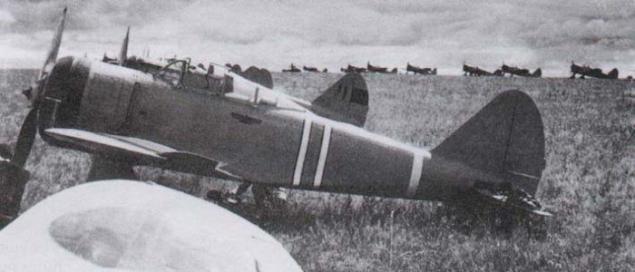
Japanese fighter Ki 27.
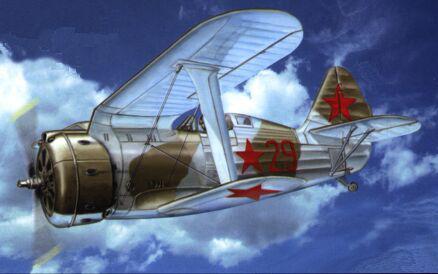
I-153 squadron leader of the third squadron of 56 IAP Major Cherkasov. Reconstruction of Vladimir Zagorodneva.
In the Japanese Air Force at the beginning of the war in Manchuria and Korea, there were 274 aircraft, ie numerical superiority they did not have. In June, the Japanese in the conflict area was 77 fighters, 24 twin-engine bomber, 28 single-engine aircraft (reconnaissance, light bombers).
Another reason that led to large losses of Soviet Air Force (all during the war the Soviet Union lost 207, and Japan - 162-164 aircraft) was massive use of fighter biplanes. Thus, on 22 June in the battle with the Japanese had lost 13 of the 49 participating fighters and 15 (27%) and only one of the 13 I-16. Commander of the 4th Squadron 22 IAP pilot Yevgeny Stepanov (was "school" of Spain) barely got out of the fight and put I-15 with a broken traction motor control. Biplanes performed well in Spain and in 1939 became the most popular fighter of the USSR, although China is already disturbing information. There our pilots faced with high-speed Japanese monoplanes.
June 22-28 were fierce air battles, the 27th in the morning the Japanese Air Force managed to strike a sudden blow to the Soviet airfields, they lost 5 aircraft, we 19. During these days the Japanese Air Force lost about 90 aircraft, we are 38.
The main and most modern monoplane Soviet Air Force in these battles was a monoplane I-16, largely because he allowed to turn the tide in favor of the Red Army Air Force.
Was successful and strategic planning for the aviation industry and the Air Force: Soviet military doctrine implies a willingness to conduct two wars at the same time - in the west and the east. And for that was created material base, Soviet aviation industry has not only created two categories of aviation, but also could make up for the loss in a timely manner. This allowed the Air Force in 1938 to support our troops during the conflict in Hassan and at the same time in the West strategic direction to keep in readiness 2,000 aircraft ready to support Czechoslovakia. In 1939, in the East Air Force fought on the Halkin-Gol and at the same time support the operation on the accession of Western Belarus and Western Ukraine.
USSR created at the front with Japan quantitative advantage in the first half of August came a new addition - about 200 aircraft. By mid-August, together with the Mongolian P-5, the Soviet Air Force was to 558 combat aircraft, more than double the Japanese. Of these, 181 aircraft - a SB bomber, which became the main striking force of the Air Force in the breakout of the Japanese front lines during the onset of August 20th. Japan was due to a weak industrial base and a simultaneous war in China (which absorbs most of the air forces) are not able to increase their strength. Only at the end of the conflict, in September, could throw 60 obsolete fighter biplanes, bringing its strength to 295 aircraft. In addition, the Japanese did not have a significant number of trained pilots, their losses were irreplaceable.
In the first half of September the 7 air battles, the largest 15 September 1939 (the day before the armistice) - 120 Japanese aircraft against 207 Soviet.
Dogfights at Halkin Gol unique in that small space faced considerable strength of the parties. They showed the importance of a good state of materiel, the need for speed replenishment pilots and equipment.
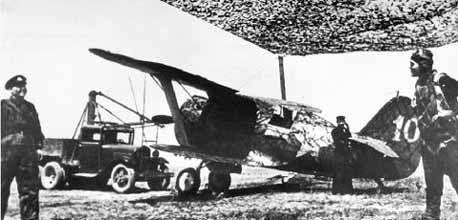
Halkin-Gol, summer 1939 Prepare a fighter I-15 for a combat flight.
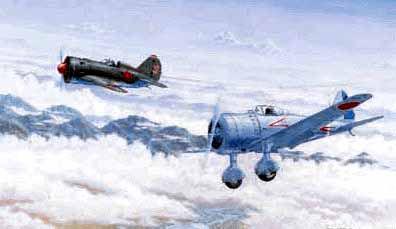
Halkin-Gol. Red Star against the rising sun. I-16 against Nakajima Ki.27.

Kutsevalov Timothy F. (1904-1975), Hero of the Soviet Union.
The fighting on land
Zhukov was sent to the Halkin-Gol as an inspector, it is believed that contributed to his sending Budyonny, the old Marshal Zhukov respected as a tough and demanding division commander. May 30 Zhukov sent to Moscow a critical report in which he said that the Corps Commander "little organized and purposeful enough." In early June, NV Feklenko recalled to Moscow, and Zhukov was appointed in his place, his chief of staff was the Brigade Commander MA Bogdanov. It was an example of Stalinist cadre principles: criticize - show yourself that you can, Zhukov got a chance to stand out.
Soon a new headquarters proposed plan: active defense on the beachhead for Khalkhin Gol and preparing counter-attack on the Japanese group. God of War gave Zhukov preparation time, the whole of June were dogfights, on land has not been major clashes.
The Japanese, too, did not sit idly by and end of the month prepared its operation, its aim was to encircle and destroy the forces of the Red Army on the eastern bank of the river, cross the river and break through the Soviet front. July 2 Japanese attacked, crossed the river and captured Mount Bayan Tsagaan 40 km from the border, the situation was complicated. Japanese forces, while building on the success hastily fortified bridgehead. Zhukov, acting on their own risk, to save the day, had to ask to battle mobile reserve - the 11th Tank Brigade Brigade Commander MP Yakovlev Mongolian Armored Division, without the support of Infantry Regiment. The brigade has completed the task, the Japanese were defeated, though at the cost of more than half of armored vehicles, but the situation was saved. Approached the other parts, the Japanese began to retreat, to stop them, the Japanese command detonated only a pontoon bridge, but in the morning of the 5th it was already fled. The Japanese lost only killed a few thousand people, almost all of armored vehicles and artillery.
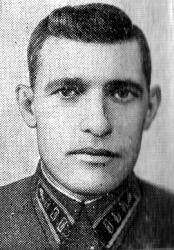
Yakovlev, Michael P. (November 18, 1903 - July 12, 1939), Hero of the Soviet Union posthumously.
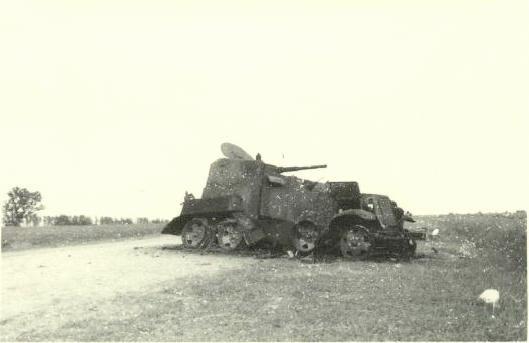
Frustrated by the Soviet armored car BA-10.
On the eastern shore of the Soviet forces withdrew to the river, reducing its foothold, but they were not defeated. To completely eliminate the threat of the MPR, it was necessary to defeat the Japanese people on the east coast, to restore the border. Beetles began to plan an offensive. The Japanese also planned offensive, but taking into account the sad experience already without crossing the river. Decided to limit the destruction of the Soviet bridgehead.
Additional forces massed 82 th Infantry Division, 37th Tank Brigade, in the Trans-Baikal Military District conducted a partial mobilization and the creation of two new divisions. On the Trans-Baikal District transferred combined battalion guards to strengthen the border of Mongolia, they detained dozens of Japanese spies. 57th body reformed the 1st Army (front-line) group.
The number of Soviet forces had increased to 57,000 fighters in the Army Group had 542 guns and mortars, 500 tanks, 385 armored vehicles and 515 combat aircraft. The Japanese, in a specially created 6th Army, was more than 75 thousand people, 500 guns, 182 tanks.
July 8-11 was fighting on the eastern bank of the river, the Soviet position was retained. 13-22 July, it was calm, the Soviet Union strengthened the bridgehead, it was transferred 24th Motorized Rifle Regiment I. Fedyuninsky and 5th infantry machine gun crew. July 23-24, the Japanese attacked, but beat our forces from the bridgehead could not.

M. Bogdanov.

Corps Commander Zhukov Marshal Choibalsan.
The defeat of the enemy
Soviet training was held in the strictest confidence, all movements took place only at night, radio communications were conducted on the preparation of defense plans and autumn-winter campaign, night sound installation broadcast the sounds of movement of tanks and aircraft to the Japanese are accustomed to the night movement of other activities conducted in order to enter the enemy misleading.
As a result of the offensive, which began on August 20 was a surprise to the Japanese army, the Japanese themselves were planning to strike on August 24. It was a classic operation with flank attacks mechanized and armored units, in order to encircle and destroy the enemy in the area between the river Halkin-Gol and the state border of Mongolia. This experience, the Red Army, under the command of Zhukov carried out before the famous attacks of the Wehrmacht in Poland, France, the Soviet Union. Strikes were three groups: the Southern Group inflicted major blow (Colonel MI Potapov), a group of North inflicted secondary attack (Colonel IP Alexeenko), Central Group fettered enemy combat (Brigade Commander Dmitry Petrov).
At 6.15 began an artillery preparation and air strikes, at 9 o'clock went to attack ground forces. The most brutal battles were fought in the central direction, here the enemy had strong fortifications. 21-22 th Zhukov introduced into battle reserve - 9th motorized armored brigade, 23rd in the central direction had to introduce a last resort - 212 th Airborne Brigade and two companies of border guards. Actively helped the Air Force, only 24-25 August bombers made 218 sorties. Japanese command could not determine the direction of the main attack and provide timely assistance to its flanks. By August 26 the environment was completed and significant forces 6th Japanese army hit the "cauldron».
Japanese soldiers showed their best side, fighting to the last prisoner did not give up attempts to unlock surrounded by forces were repulsed. By 31 August, the MPR has been cleared from the Japanese.

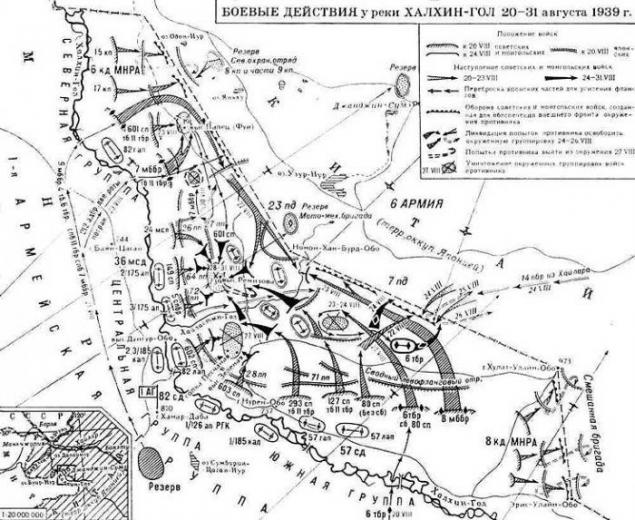
4 and 8 September the Japanese forces tried to take the Mongolian border areas, but were repulsed, suffering heavy losses (only about 500 dead).
September 15, 1939 was signed between the Soviet Union, Mongolia and Japan to cease hostilities in Khalkhin-Gol, which entered into force on 16 September. Finally settled the conflict was in May 1942, was signed a definitive agreement for the settlement of the problem: it was a compromise, largely in favor of Japan, the settlement boundaries based on old maps. The USSR was in a difficult position and insist on was diplomatically wrong. However, the agreement lasted only until 1945, then returned to Mongolia in 1942 ceded areas.
The results:
- Demonstration of the military power of the USSR for Hassan and Halkin Gol Tokyo showed all the danger of war with the Red Army and was the main reason for choosing the Japanese elite Destinations expansion - Southern. And this on the eve of the German attack on the Soviet Union was of great strategic military importance, we have received a relatively safe rear in the East.
- Halkin Gol was the beginning of a great career Zhukov, before one of the many commanders became commander of one of the most important military districts of the country - Kiev, and the Chief of the General Staff.

Michitarō Komatsubara, led the military operation Imperial Japanese Army at Khalkhin Gol, in the autumn of 1940 committed suicide.

Memorial "Zaisan", Ulaanbaatar.
Author Alexander Samsonov

Tank attack of the Red Army. Khalkhin Gol, August 1939. Beginning conflict
From January 1939 on the border of Mongolia Japanese provocations, border guards fired on the Mongolian People's Republic (MPR), attacked their outfits.
At May 8 squad tried to capture the Japanese island on the river Halkin Gol Mongolian border guards repulsed the attack. 11 May the Japanese cavalry detachment wedged deep into the territory of Mongolia on 15 km and attacked the frontier, after the arrival of reinforcements Mongols drove the enemy to the border. 14th Japanese squad, supported by aircraft, attacked the 7th frontier of Mongolia, the Japanese occupied the heights Dungur-Obo, 15th Busy height of the Japanese company were transferred 2 and 8 armored vehicles.
The Soviet Union was associated with MPR "Protocol on mutual assistance," our army responded immediately: in the morning on May 17th Division 57th Special Rifle Corps NV Feklenko were sent to the conflict area, 22th Soviet troops drove the enemy to the border. 22-28 May in the area of conflict, the parties focused their forces: by the Soviet Union and Mongolia was around 1,000 people, the Japanese are more than 1,600 people. May 28 the Japanese attacked in order to encircle the Soviet-Mongolian forces and cut them off from the crossing to the west bank of the river. Our forces retreated, the plan was foiled by the environment. 29th our forces counterattacked and regained the position.
Moscow said it will defend the borders of Mongolia "as their own," began transfer of armored and air units. So, May 1, there were 84 aircraft on May 23 - 147, June 17 - 267 aircraft.

Japanese infantry crossed the river. Khalkhin Gol.
Air War
In June, the fighting on the ground was not, but there was a fierce battle for supremacy in the air. The first aircraft, machine type P-5, the Soviet Union lost 22 of May. The first clash with the Japanese Air Force Soviet Union caused concern in Moscow on May 27, was defeated 1st Squadron 22 IAP (IAP), a fighter Major T.F.Kutsevalova not take off due to a malfunction of the engine, 4 more fighters came out battlefield and sat down for the same reason, the remaining four pilots - two died. One was injured.
On May 28 was almost completely destroyed 4th Squadron 22 IAP: 10 pilots - 5 dead or missing and three were wounded. In early June, began arriving pilots who had experience fighting in Spain and China, as trainers and organizers. It may be noted that the pilots, who had no experience fighting, quickly adopted their experience that speaks to their overall well-prepared. Group of pilots and technicians from 48 people, headed by the deputy chief of Air Force Ya.V.Smushkevichem except him 16 more pilots have the title of Hero of the Soviet Union, they were divided into parts and started training personnel.

Japanese fighter Ki 27.

I-153 squadron leader of the third squadron of 56 IAP Major Cherkasov. Reconstruction of Vladimir Zagorodneva.
In the Japanese Air Force at the beginning of the war in Manchuria and Korea, there were 274 aircraft, ie numerical superiority they did not have. In June, the Japanese in the conflict area was 77 fighters, 24 twin-engine bomber, 28 single-engine aircraft (reconnaissance, light bombers).
Another reason that led to large losses of Soviet Air Force (all during the war the Soviet Union lost 207, and Japan - 162-164 aircraft) was massive use of fighter biplanes. Thus, on 22 June in the battle with the Japanese had lost 13 of the 49 participating fighters and 15 (27%) and only one of the 13 I-16. Commander of the 4th Squadron 22 IAP pilot Yevgeny Stepanov (was "school" of Spain) barely got out of the fight and put I-15 with a broken traction motor control. Biplanes performed well in Spain and in 1939 became the most popular fighter of the USSR, although China is already disturbing information. There our pilots faced with high-speed Japanese monoplanes.
June 22-28 were fierce air battles, the 27th in the morning the Japanese Air Force managed to strike a sudden blow to the Soviet airfields, they lost 5 aircraft, we 19. During these days the Japanese Air Force lost about 90 aircraft, we are 38.
The main and most modern monoplane Soviet Air Force in these battles was a monoplane I-16, largely because he allowed to turn the tide in favor of the Red Army Air Force.
Was successful and strategic planning for the aviation industry and the Air Force: Soviet military doctrine implies a willingness to conduct two wars at the same time - in the west and the east. And for that was created material base, Soviet aviation industry has not only created two categories of aviation, but also could make up for the loss in a timely manner. This allowed the Air Force in 1938 to support our troops during the conflict in Hassan and at the same time in the West strategic direction to keep in readiness 2,000 aircraft ready to support Czechoslovakia. In 1939, in the East Air Force fought on the Halkin-Gol and at the same time support the operation on the accession of Western Belarus and Western Ukraine.
USSR created at the front with Japan quantitative advantage in the first half of August came a new addition - about 200 aircraft. By mid-August, together with the Mongolian P-5, the Soviet Air Force was to 558 combat aircraft, more than double the Japanese. Of these, 181 aircraft - a SB bomber, which became the main striking force of the Air Force in the breakout of the Japanese front lines during the onset of August 20th. Japan was due to a weak industrial base and a simultaneous war in China (which absorbs most of the air forces) are not able to increase their strength. Only at the end of the conflict, in September, could throw 60 obsolete fighter biplanes, bringing its strength to 295 aircraft. In addition, the Japanese did not have a significant number of trained pilots, their losses were irreplaceable.
In the first half of September the 7 air battles, the largest 15 September 1939 (the day before the armistice) - 120 Japanese aircraft against 207 Soviet.
Dogfights at Halkin Gol unique in that small space faced considerable strength of the parties. They showed the importance of a good state of materiel, the need for speed replenishment pilots and equipment.

Halkin-Gol, summer 1939 Prepare a fighter I-15 for a combat flight.

Halkin-Gol. Red Star against the rising sun. I-16 against Nakajima Ki.27.

Kutsevalov Timothy F. (1904-1975), Hero of the Soviet Union.
The fighting on land
Zhukov was sent to the Halkin-Gol as an inspector, it is believed that contributed to his sending Budyonny, the old Marshal Zhukov respected as a tough and demanding division commander. May 30 Zhukov sent to Moscow a critical report in which he said that the Corps Commander "little organized and purposeful enough." In early June, NV Feklenko recalled to Moscow, and Zhukov was appointed in his place, his chief of staff was the Brigade Commander MA Bogdanov. It was an example of Stalinist cadre principles: criticize - show yourself that you can, Zhukov got a chance to stand out.
Soon a new headquarters proposed plan: active defense on the beachhead for Khalkhin Gol and preparing counter-attack on the Japanese group. God of War gave Zhukov preparation time, the whole of June were dogfights, on land has not been major clashes.
The Japanese, too, did not sit idly by and end of the month prepared its operation, its aim was to encircle and destroy the forces of the Red Army on the eastern bank of the river, cross the river and break through the Soviet front. July 2 Japanese attacked, crossed the river and captured Mount Bayan Tsagaan 40 km from the border, the situation was complicated. Japanese forces, while building on the success hastily fortified bridgehead. Zhukov, acting on their own risk, to save the day, had to ask to battle mobile reserve - the 11th Tank Brigade Brigade Commander MP Yakovlev Mongolian Armored Division, without the support of Infantry Regiment. The brigade has completed the task, the Japanese were defeated, though at the cost of more than half of armored vehicles, but the situation was saved. Approached the other parts, the Japanese began to retreat, to stop them, the Japanese command detonated only a pontoon bridge, but in the morning of the 5th it was already fled. The Japanese lost only killed a few thousand people, almost all of armored vehicles and artillery.

Yakovlev, Michael P. (November 18, 1903 - July 12, 1939), Hero of the Soviet Union posthumously.

Frustrated by the Soviet armored car BA-10.
On the eastern shore of the Soviet forces withdrew to the river, reducing its foothold, but they were not defeated. To completely eliminate the threat of the MPR, it was necessary to defeat the Japanese people on the east coast, to restore the border. Beetles began to plan an offensive. The Japanese also planned offensive, but taking into account the sad experience already without crossing the river. Decided to limit the destruction of the Soviet bridgehead.
Additional forces massed 82 th Infantry Division, 37th Tank Brigade, in the Trans-Baikal Military District conducted a partial mobilization and the creation of two new divisions. On the Trans-Baikal District transferred combined battalion guards to strengthen the border of Mongolia, they detained dozens of Japanese spies. 57th body reformed the 1st Army (front-line) group.
The number of Soviet forces had increased to 57,000 fighters in the Army Group had 542 guns and mortars, 500 tanks, 385 armored vehicles and 515 combat aircraft. The Japanese, in a specially created 6th Army, was more than 75 thousand people, 500 guns, 182 tanks.
July 8-11 was fighting on the eastern bank of the river, the Soviet position was retained. 13-22 July, it was calm, the Soviet Union strengthened the bridgehead, it was transferred 24th Motorized Rifle Regiment I. Fedyuninsky and 5th infantry machine gun crew. July 23-24, the Japanese attacked, but beat our forces from the bridgehead could not.

M. Bogdanov.

Corps Commander Zhukov Marshal Choibalsan.
The defeat of the enemy
Soviet training was held in the strictest confidence, all movements took place only at night, radio communications were conducted on the preparation of defense plans and autumn-winter campaign, night sound installation broadcast the sounds of movement of tanks and aircraft to the Japanese are accustomed to the night movement of other activities conducted in order to enter the enemy misleading.
As a result of the offensive, which began on August 20 was a surprise to the Japanese army, the Japanese themselves were planning to strike on August 24. It was a classic operation with flank attacks mechanized and armored units, in order to encircle and destroy the enemy in the area between the river Halkin-Gol and the state border of Mongolia. This experience, the Red Army, under the command of Zhukov carried out before the famous attacks of the Wehrmacht in Poland, France, the Soviet Union. Strikes were three groups: the Southern Group inflicted major blow (Colonel MI Potapov), a group of North inflicted secondary attack (Colonel IP Alexeenko), Central Group fettered enemy combat (Brigade Commander Dmitry Petrov).
At 6.15 began an artillery preparation and air strikes, at 9 o'clock went to attack ground forces. The most brutal battles were fought in the central direction, here the enemy had strong fortifications. 21-22 th Zhukov introduced into battle reserve - 9th motorized armored brigade, 23rd in the central direction had to introduce a last resort - 212 th Airborne Brigade and two companies of border guards. Actively helped the Air Force, only 24-25 August bombers made 218 sorties. Japanese command could not determine the direction of the main attack and provide timely assistance to its flanks. By August 26 the environment was completed and significant forces 6th Japanese army hit the "cauldron».
Japanese soldiers showed their best side, fighting to the last prisoner did not give up attempts to unlock surrounded by forces were repulsed. By 31 August, the MPR has been cleared from the Japanese.


4 and 8 September the Japanese forces tried to take the Mongolian border areas, but were repulsed, suffering heavy losses (only about 500 dead).
September 15, 1939 was signed between the Soviet Union, Mongolia and Japan to cease hostilities in Khalkhin-Gol, which entered into force on 16 September. Finally settled the conflict was in May 1942, was signed a definitive agreement for the settlement of the problem: it was a compromise, largely in favor of Japan, the settlement boundaries based on old maps. The USSR was in a difficult position and insist on was diplomatically wrong. However, the agreement lasted only until 1945, then returned to Mongolia in 1942 ceded areas.
The results:
- Demonstration of the military power of the USSR for Hassan and Halkin Gol Tokyo showed all the danger of war with the Red Army and was the main reason for choosing the Japanese elite Destinations expansion - Southern. And this on the eve of the German attack on the Soviet Union was of great strategic military importance, we have received a relatively safe rear in the East.
- Halkin Gol was the beginning of a great career Zhukov, before one of the many commanders became commander of one of the most important military districts of the country - Kiev, and the Chief of the General Staff.

Michitarō Komatsubara, led the military operation Imperial Japanese Army at Khalkhin Gol, in the autumn of 1940 committed suicide.

Memorial "Zaisan", Ulaanbaatar.
Author Alexander Samsonov
Tags
See also
100 interesting facts from the history of the USSR and Russia
D.B.Kuper - enemy of the state or the idol of the people (12 photos)
The murder of Kennedy. Version UFO
Soviet Armed Forces (82 photos)
10 most bizarre wars (10 photos)
The isolation of the island - a guarantee of having his terrible secret.
The list of dangerous products that are impossible (38 photos)
Purchase of household appliances in the USSR
Little-known facts about the US dollar (13 photos)
25 most brutal prisons in the world (25 photos)
















